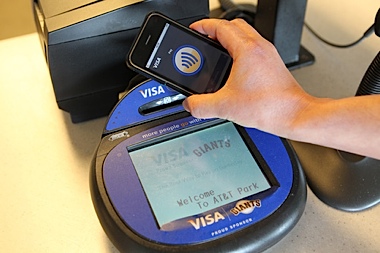 A new report from China Times is the latest in a steady stream of rumors indicating that the iPhone 5 will include near-field communications (NFC) technology to support mobile “e-wallet” transactions. The report says that the next-generation Apple smartphone has entered the “trial production stage” en route to a summer 2011 release.
A new report from China Times is the latest in a steady stream of rumors indicating that the iPhone 5 will include near-field communications (NFC) technology to support mobile “e-wallet” transactions. The report says that the next-generation Apple smartphone has entered the “trial production stage” en route to a summer 2011 release.
Earlier this week, The New York Times reported that Apple was working on developing NFC technology for a “coming” iPhone model, but didn’t indicate if that would be the iPhone 5. The new reports favoring the inclusion of NFC are in contrast with a report out of the U.K. suggesting Apple was dropping its plans for an NFC-ready iPhone 5.
China Times has reported that the phone will have a redesigned metal chassis meant to improve antennae function. The iPhone 4 was widely criticized for its poor antennae design, which was blamed for weakening signal strength when the phone was gripped in certain ways.
The iPhone 5 is also said to feature a new 4-inch scratch resistant touchscreen, adding weight to rumors that Apple would offer a larger screen on the new iPhone model. A 4-inch screen would offer a half-inch more over the 3.5-inch screen of the iPhone 4. It’s widely suspected that Apple will increase the screen size without increasing the overall size of the device by opting for an edge-to-edge touchscreen design. The report also said that the iPhone 5 will include the A5 dual-core processor, which made its debut in the newly-launched iPad 2.
The China Times has also indicated that Apple and its manufacturing partner Foxconn may be looking to establish a new facility in Sao Paulo Brazil. The new facility would be dedicated to producing Apple components and would be up and running sometime in 2013.
Editors' Recommendations
- An Apple insider just revealed how iOS 18’s AI features will work
- 5 phones you should buy instead of the iPhone 15
- iPhone 16: news, rumored price, release date, and more
- iPhone SE 4: news, rumored price, release date, and more
- 3 reasons why I’ll actually use Anker’s new iPhone power bank


